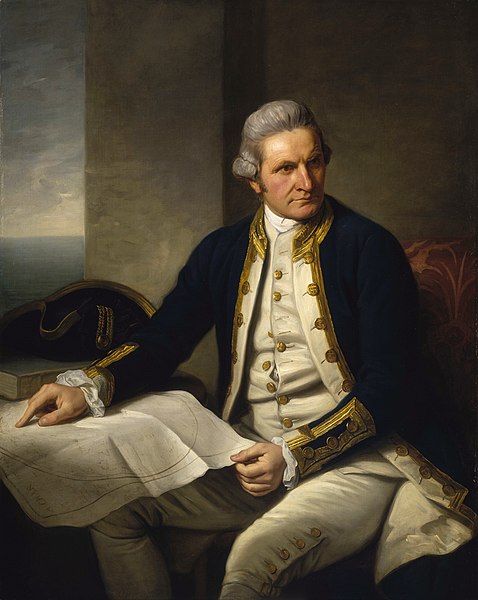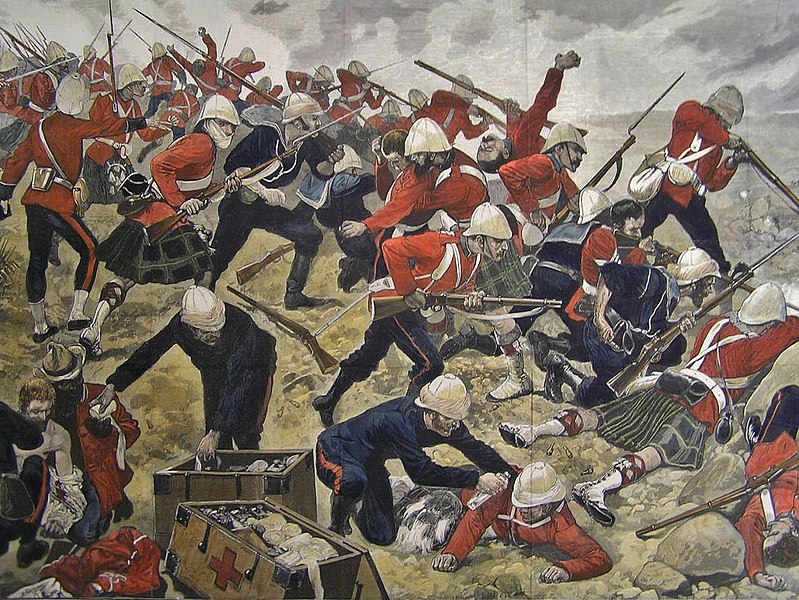January 17th stands as a beacon in history, illuminating a diverse array of pivotal moments that have shaped our world.
From the strategic moves of popes and explorers to the dramatic shifts brought about by wars, discoveries, and revolutions, this date captures the essence of human endeavor and transformation.
In this article, we explore significant events that occurred on January 17th, offering insights into the forces that have molded our current reality. Join us on a journey through time, reflecting on the legacies that continue to influence our lives today.
January 17th Events in History
1377 – Pope Gregory XI moves the Papacy back to Rome from Avignon, marking the end of the Avignon Papacy
This event marked the end of the Avignon Papacy, a period from 1309 to 1377 during which seven successive popes resided in Avignon, France, rather than in Rome.
The move was largely motivated by the turmoil and the challenges the Papacy faced due to its distance from the central seat of the Church in Rome.
Also Read: January 16 – On this Day in History
Pope Gregory XI’s decision to return to Rome was influenced by the plea of St. Catherine of Siena and others, who argued that the true home of the Papacy was in Rome, the city of the apostle Peter.
This move helped to restore the Papacy’s central role in European politics and religion, though it also set the stage for the Western Schism, a split within the Church that lasted from 1378 to 1417.

1524 – Giovanni da Verrazzano sets sail westward from Madeira to find a sea route to the Pacific Ocean, leading to the discovery of New York Harbor
Giovanni da Verrazzano, an Italian explorer sailing under the French flag, embarked on a voyage to discover a sea route to the Pacific Ocean that would facilitate trade with the East.
Also Read: January 18th Events in History
Though he did not achieve this goal, his journey led to the first documented European exploration of the Atlantic coast of North America between the Carolinas and Newfoundland, including New York Bay and Narragansett Bay.
This exploration was significant for the detailed mapping and description of the American coastline, contributing to future voyages and the eventual European colonization of the Americas.
1595 – Henry IV of France declares war on Spain, initiating the War of the Spanish Succession
This declaration of war marked the beginning of the War of the Spanish Succession. Henry IV’s decision was influenced by political and religious tensions in Europe, particularly the struggle between Catholic Spain and the Protestant states, including France, which was governed by the Bourbon dynasty after Henry IV’s conversion to Catholicism.
This conflict was part of the larger Thirty Years’ War, which ravaged Europe from 1618 to 1648, involving most of the great powers of the time and causing widespread destruction.
1601 – France gains Bresse, Bugey, Valromey, and Gex in the Treaty of Lyon, marking territorial changes in European borders
The Treaty of Lyon, signed between France and Savoy, resulted in France acquiring the regions of Bresse, Bugey, Valromey, and Gex.
This territorial expansion was significant for France, as it not only expanded its borders but also strengthened its position in the region, particularly in the context of the ongoing power struggles with the Habsburgs, who controlled neighboring territories.
The treaty reflected the diplomatic success of Henry IV of France in consolidating power and extending French influence throughout Europe.
1773 – Captain James Cook and his crew become the first Europeans to sail below the Antarctic Circle
On his second voyage of exploration in the Resolution, Captain James Cook crossed the Antarctic Circle, becoming the first recorded European to do so. While Cook did not sight the Antarctic continent itself, his voyages contributed significantly to the understanding of the Southern Hemisphere’s geography.
Cook’s expeditions were motivated by a mix of scientific curiosity, the quest for new territories, and the search for the speculated Southern Continent. His meticulous mapping and documentation of these regions opened new avenues for exploration and increased European interest in the southern seas.

1781 – American Revolutionary War: Battle of Cowpens, a decisive victory by American Revolutionary forces in South Carolina, led by Brigadier General Daniel Morgan
The Battle of Cowpens was a decisive victory for the American forces during the Southern campaign of the American Revolutionary War. Led by Brigadier General Daniel Morgan, the Continental Army’s tactics involved a clever use of the terrain and innovative combat strategies against the British forces commanded by Lieutenant Colonel Banastre Tarleton.
The battle took place in the backcountry of South Carolina and is considered a pivotal moment in the war because it significantly weakened British authority in the South, leading to a series of retreats and eventual surrender at Yorktown later that year.
The victory at Cowpens boosted American morale and demonstrated the effectiveness of the Continental Army’s tactics and leadership.
1820 – Antarctica is discovered by a Russian expedition led by Fabian Gottlieb von Bellingshausen and Mikhail Lazarev
This momentous discovery was made by an expedition led by Fabian Gottlieb von Bellingshausen and Mikhail Lazarev, who were naval officers in the Russian Imperial Navy. On January 17, 1820, they became the first known people to see the continent of Antarctica.
Their sighting confirmed the existence of a terrestrial landmass in the southernmost part of the globe, a topic that had been the subject of speculation for centuries. This discovery was crucial for the fields of geography and natural science, opening a new frontier for exploration and research that continues to this day.
1852 – The United Kingdom recognizes the independence of the Boer colonies of the Transvaal
In the early 19th century, the Boer settlers (Afrikaans-speaking farmers from the Dutch East India Company) moved into the interior of South Africa in what is known as the Great Trek, seeking to live beyond the control of British colonial authority.
They established several independent republics, including the Transvaal. The formal recognition of the independence of the Boer colonies by the United Kingdom in 1852, after a series of conflicts and negotiations, was a significant moment in South African history.
It acknowledged the sovereignty of the Boer settlers but also set the stage for future conflicts, including the Anglo-Zulu War and the Boer Wars, as Britain sought to consolidate its control over the region.

1873 – A group of Modoc warriors defeats the United States Army in the First Battle of the Stronghold, part of the Modoc War
This battle was part of the Modoc War, a conflict between the Modoc people and the United States Army in the late 19th century. The Modocs, seeking to defend their land and way of life, fortified themselves in a natural lava fortress known as Captain Jack’s Stronghold in northern California.
Despite being vastly outnumbered, the Modoc warriors utilized the terrain to their advantage and repelled the first major assault by the Army. The First Battle of the Stronghold was notable for the Modoc’s strategic use of their knowledge of the land, highlighting the resistance of Native American peoples to displacement by European American settlers and the government.
1893 – The Kingdom of Hawaii is overthrown by a group of American and European businessmen, leading to the eventual annexation by the United States
This event marked a significant turning point in the history of Hawaii. A coalition of businessmen, with the support of the United States government and military, staged a coup against Queen Liliʻuokalani, who was the last sovereign monarch of the Hawaiian Kingdom.
The queen was overthrown because she sought to implement a new constitution that would restore power to the monarchy and the native Hawaiian people, threatening the economic interests of the businessmen who controlled a significant portion of the Hawaiian economy.
The coup led to the establishment of a provisional government, which eventually resulted in the annexation of Hawaii by the United States in 1898. The overthrow of the Kingdom of Hawaii represented a pivotal moment in the colonization of the Pacific and the expansion of American influence overseas.
1904 – Anton Chekhov’s “The Cherry Orchard” opens at the Moscow Art Theatre
This event marked the premiere of one of Anton Chekhov’s most famous plays, “The Cherry Orchard,” which was directed by Konstantin Stanislavski. The play is a tragicomedy, centered around an aristocratic Russian woman and her family as they face the sale of their estate (and its beloved cherry orchard) to pay off their debts.
The work is notable for its complex characters, its mixture of comedy and tragedy, and its commentary on the social changes sweeping through Russia at the turn of the 20th century.
“The Cherry Orchard” is often interpreted as a reflection on the decline of the aristocracy and the rise of the bourgeoisie in pre-revolutionary Russia. Its opening at the Moscow Art Theatre was a significant cultural event and cemented Chekhov’s legacy as a master playwright.
1917 – The United States pays Denmark $25 million for the Virgin Islands
This transaction is known as the Treaty of the Danish West Indies. Concerned about Germany’s ambitions in the Caribbean and seeking to protect the Panama Canal’s strategic approach, the United States negotiated with Denmark to purchase the Danish West Indies. This acquisition included the islands of Saint Thomas, Saint John, and Saint Croix.
The deal was mutually beneficial: it provided Denmark with a needed financial boost and secured a strategic position for the United States in the Caribbean. The islands were subsequently renamed the United States Virgin Islands and became an unincorporated territory of the United States, playing a key role in military and economic strategies in the region.
1945 – World War II: Soviet forces capture the almost completely destroyed Polish city of Warsaw
The capture of Warsaw by the Soviet Red Army was a significant event in the final stages of World War II. The city had been devastated by the Warsaw Uprising in 1944, where the Polish resistance Home Army (Armia Krajowa) attempted to liberate Warsaw from German occupation ahead of the Soviet arrival. The uprising was brutally suppressed by the Germans, leading to massive destruction and loss of life.
When the Soviets finally entered the city, they found it in ruins. This event highlighted the complex political and military dynamics between the Allies, the resistance movements in occupied countries, and the Soviet Union’s strategic interests in Eastern Europe, which would influence post-war geopolitics and the onset of the Cold War.

1946 – The United Nations Security Council holds its first session
The establishment of the United Nations Security Council marked a pivotal moment in international relations, following the devastation of World War II.
As one of the six principal organs of the United Nations, the Security Council was tasked with ensuring international peace and security, accepting new members to the United Nations, and approving any changes to its charter. The first session symbolized the global commitment to dialogue and cooperation to prevent future conflicts.
The Security Council’s permanent members (China, France, the Soviet Union, the United Kingdom, and the United States) were granted the power to veto, reflecting the geopolitical realities of the time and the desire to maintain a balance of power in the post-war world.
1961 – Former Congolese Prime Minister Patrice Lumumba is murdered in a coup during the Congo Crisis
Patrice Lumumba was the first democratically elected Prime Minister of the Republic of the Congo (now the Democratic Republic of the Congo) after it gained independence from Belgium in 1960. His tenure was marked by his strong nationalism, efforts to unite the Congo, and his opposition to colonial economic practices.
Lumumba’s vision for an independent, unified Congo and his turn towards the Soviet Union for support alarmed Western powers and led to his overthrow. His assassination in a coup, believed to be backed by Belgium and with the complicity of the United States and the United Nations, was a tragic moment in African post-colonial history.
It underscored the Cold War’s global reach and the lengths to which Western powers would go to maintain influence in strategically important regions. Lumumba’s death became a symbol of the struggle for independence and the complexities of the Cold War in Africa.
1973 – Ferdinand Marcos becomes President for Life of the Philippines after ratifying the 1973 Constitution
Ferdinand Marcos, who first came to power in the Philippines in 1965, declared martial law in 1972, citing rising civil disorder and the threat of communist insurgency. The 1973 Constitution, which was ratified in a controversial manner, effectively allowed Marcos to rule by decree and remain in power indefinitely, cementing his dictatorship.
Under this new constitution, Marcos assumed sweeping powers, including the ability to legislate by presidential decree. His regime was marked by human rights abuses, suppression of political dissent, and widespread corruption. Marcos’s rule would last until 1986, when a popular uprising, known as the People Power Revolution, forced him into exile.
1982 – “Cold Sunday”: In the United States, temperatures fall to their lowest levels in over 100 years in numerous cities
This extreme weather event saw record-breaking cold temperatures across many parts of the United States. On January 17, 1982, the cold snap resulted in some of the lowest temperatures on record for cities across the Midwest and Eastern United States.
The severe cold caused significant disruptions, including power outages and damage to infrastructure. The event highlighted the vulnerabilities in energy, transportation, and housing to extreme weather conditions and prompted improvements in weather forecasting and emergency response strategies.
1991 – Operation Desert Storm begins in the Gulf War, as coalition forces begin bombing Iraq
This military operation marked the start of the combat phase of the Gulf War, after several months of diplomatic conflict and the buildup of coalition forces led by the United States in response to Iraq’s invasion and annexation of Kuwait in August 1990.
The operation began with an extensive aerial bombing campaign, followed by a ground assault, which aimed to expel Iraqi forces from Kuwait. Operation Desert Storm was notable for its use of precision-guided munitions and was one of the first conflicts to be extensively covered by live television broadcasts, shaping public perception of modern warfare.
1995 – The Great Hanshin earthquake hits the Kobe region of Japan, killing over 6,000 people
On January 17, 1995, a devastating earthquake with a moment magnitude of 6.9 struck the Kobe region of Japan. One of the deadliest earthquakes in Japan’s history, it caused widespread destruction to homes, infrastructure, and the economy, with damages estimated in the tens of billions of dollars.
The disaster exposed weaknesses in building construction and emergency preparedness, leading to significant changes in Japan’s earthquake standards and disaster response measures.
2010 – Riots break out in Algiers, Algeria over rising food prices and unemployment, marking significant social unrest
These riots were part of a series of protests that swept across Algeria, driven by discontent over soaring food prices, high unemployment rates, and general economic malaise. The unrest reflected broader social and economic challenges facing the country, including the gap between the wealthy elite and the general population.
The protests in Algeria were also seen as a precursor to the Arab Spring, a wave of anti-government protests, uprisings, and armed rebellions that spread across much of the Arab world in the early 2010s.
